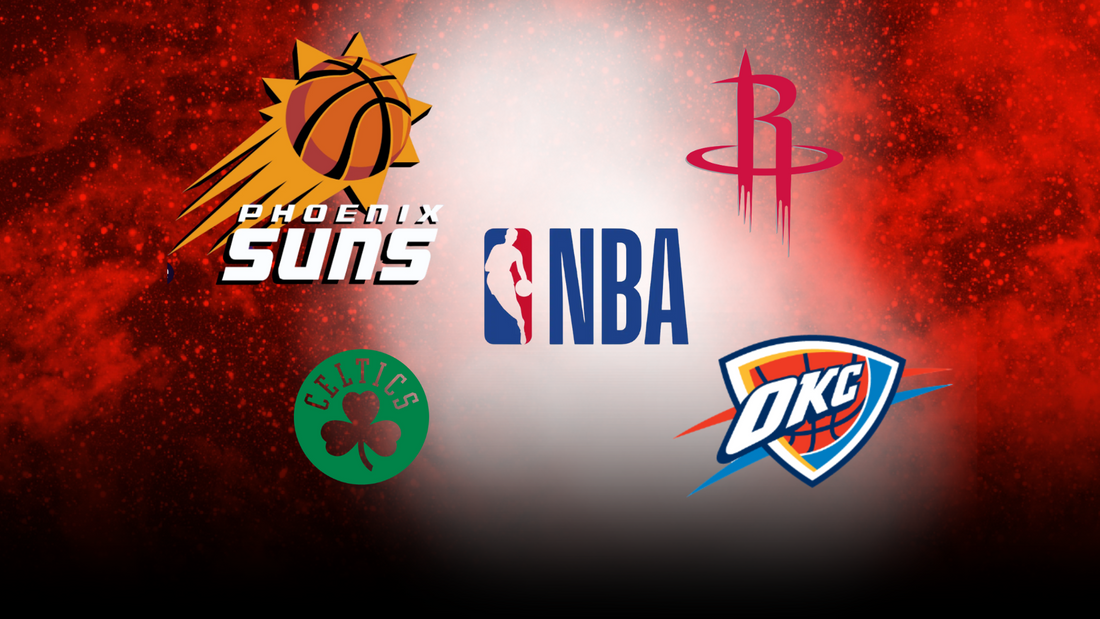
NBA Mega Trade Talks: Celtics, Suns, Rockets, and Thunder Eye Salary Cap Resets
By Edcel Panganiban June 08, 2025 12:43
As the 2025-26 NBA offseason approaches, the league is abuzz with speculation about potential mega trades involving the Boston Celtics, Phoenix Suns, Houston Rockets, and Oklahoma City Thunder. Central to these discussions is the significant 10% rise in the salary cap from $140.6 million to approximately $154.6 million triggered by the NBA’s lucrative new broadcast rights deal. This increase, while gradual due to the collective bargaining agreement’s “cap smoothing” provision, offers teams more financial flexibility to pursue transformative roster moves aimed at resetting their salary structures and positioning for long-term success.
Salary Cap Surge Spurs Trade Frenzy
The cap rise and corresponding luxury tax threshold increase from $170.8 million to $187.9 million provide breathing room for teams like the Celtics, Suns, Rockets, and Thunder, all of whom face varying degrees of salary cap pressure. The first and second luxury tax aprons have also risen, from $178.1 million to $195.9 million and $188.9 million to $207.8 million, respectively, affecting how aggressively teams can spend without incurring harsh penalties.
Boston, fresh off a deep playoff run but constrained by max contracts to stars like Jayson Tatum and Jaylen Brown, is reportedly exploring multi-player trades to shed salary and acquire younger, cost-controlled talent. With the cap increase, the Celtics can absorb larger contracts in trades but remain cautious about luxury tax implications. A source close to the Celtics told ESPN, “We’re looking to reset the books, gain flexibility for future extensions, and build around our core without sacrificing depth.”
Phoenix Suns: Rebuilding with Flexibility
The Suns, who have grappled with luxury tax burdens due to their star-studded roster, view the cap rise as an opportunity to recalibrate. With key players like Devin Booker and Deandre Ayton locked in, Phoenix is eyeing trades that could offload burdensome contracts and acquire draft picks or young assets. NBA analyst Bobby Marks noted, “The Suns’ front office is keenly aware that the new cap space can facilitate trades that were previously unfeasible, especially to avoid luxury tax escalators.”
Houston, still in rebuilding mode, is leveraging its modest cap space and expiring contracts to package for veteran talent or promising young players. The Rockets’ payroll, anchored by Fred VanVleet’s $44.9 million contract (pending a likely renegotiation), leaves limited wiggle room, but the cap rise allows them to entertain larger trades. According to recent projections, Houston might utilize the non-taxpayer mid-level exception, now increased to $14.1 million, to add key pieces post-trade.
Oklahoma City Thunder: The Salary Reset Specialists
Perhaps the most active in trade talks, the Thunder have embraced a strategy of salary cap resets to accelerate their rebuild. With a young core led by Shai Gilgeous-Alexander and a deep pool of draft assets, Oklahoma City is willing to absorb contracts in exchange for future picks and prospects. The cap increase enables the Thunder to take on larger salaries without immediately breaching luxury tax thresholds, making them attractive trade partners.
NBA salary cap expert Keith Smith explained, “The Thunder’s flexibility under the new cap structure makes them a prime destination for teams looking to offload salary. They can absorb contracts while maintaining a competitive roster and accumulating assets.”
Trade Mechanics and Challenges
While the 10% cap increase offers teams more room, the NBA’s new collective bargaining agreement also imposes stricter penalties for teams that exceed the luxury tax apron, including roster-building restrictions. This creates a delicate balancing act: teams must weigh the benefits of acquiring star talent against the financial and operational costs of luxury tax penalties.
Moreover, the “cap smoothing” mechanism prevents a sudden cap spike, meaning teams cannot drastically overspend in a single offseason. This gradual increase tempers the free-agent market but encourages strategic trades that reset salary commitments over multiple years.
The 2025-26 NBA salary cap rise has ignited a flurry of mega trade talks involving the Celtics, Suns, Rockets, and Thunder, each seeking to leverage newfound financial flexibility to reshape their rosters. Whether through shedding salary, acquiring young talent, or resetting cap structures, these teams are poised to engage in complex multi-player deals that could redefine the league’s competitive landscape.
As the offseason unfolds, fans and analysts will closely monitor how these franchises navigate the interplay of cap space, luxury tax thresholds, and roster-building restrictions. The coming months promise high-stakes negotiations and blockbuster trades that could alter the NBA’s balance of power for years to come.


































































